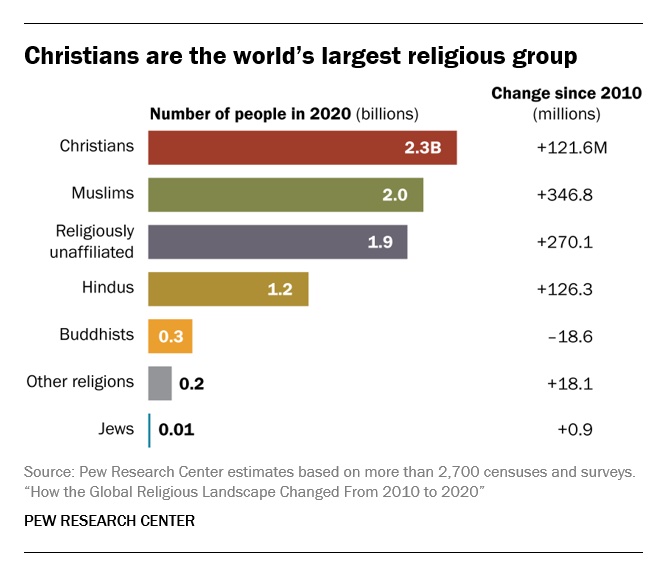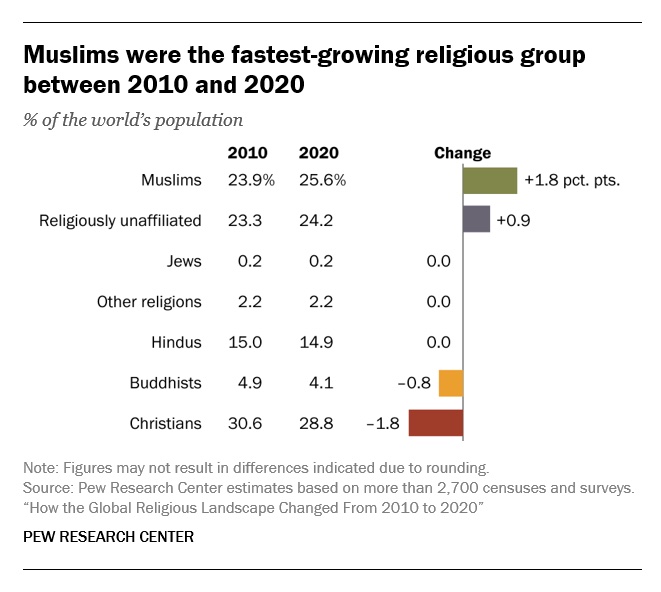Uncategorized
Lacrosse is on the rise in Israel, as its men’s national team enters the world championship ranked 7th
(JTA) — Days after Israel’s under-20 soccer team shocked the world with a third-place finish in the FIFA Under-20 World Cup, another one of the country’s national teams is looking for international glory — this time in a sport played by few in Israel.
The 2023 World Lacrosse Men’s Championship begins on Wednesday in San Diego, and Israel is ranked seventh among the 30 teams. They were ranked second in Europe coming into the tournament.
Those rankings might surprise the average Israeli. Today, the Israel Lacrosse Association estimates that between 300 and 400 Israeli children and teens play the sport across the country, and that’s after over a decade of recruitment and youth development. Israel’s national lacrosse team is mostly made up of American-born Jews. The lacrosse association, based out of the Daniel Kraft Family National Lacrosse Center in Ashkelon, was founded by one American in 2010 and is currently run by another American.
But two of the 23 players on the national team are Israeli natives, and the women’s national team has one native Israeli, too — something Israel Lacrosse Executive Director Ian Kadish says is a meaningful increase in how the sport is spreading.
“We are now getting to a really exciting point in our organization where a lot of that leadership and a lot of that energy is coming from native-born Israelis,” Kadish told the Jewish Telegraphic Agency.
Yakov Silberlicht, who is Israel Lacrosse’s director of youth development and the men’s team captain, pointed to another telling statistic: Israel’s under-21 men’s team, which competed in Ireland last summer, featured 19 native Israelis out of 23 players. And the women’s under-21 team, which is preparing for the U21 European Lacrosse Championships in Prague next month, is also almost entirely Israeli.
“That’s what gets me fired up and makes me tick and gets me out of bed every morning, is just opening that door and offering the opportunity to those young [Israeli] men and women to be able to play for our national teams,” said Silberlicht, who is also an American expat.
Even in areas where lacrosse is more prominent, such as Canada and the Northeast United States (which have combined to win every edition of the first 14 men’s world championships), it is still considered a niche sport compared to baseball, football and other major sports. According to a study by the Aspen Institute, 466,000 Americans aged 13-17 played lacrosse in 2019, compared to the more than 2 million who play baseball and the more than 3 million who play basketball.
David Wiseman, who tracks Israeli sports for his popular Facebook page Follow Team Israel, commended Israel Lacrosse for the progress it has made, including the opportunities it has opened up for female athletes.
“The fact that they can get it flourishing in Israel is remarkable,” he told JTA. “They’ve punched above their weight by like 3 million percent.”
Israel has also begun hosting international tournaments, including the 2018 men’s international championship and the 2019 Women’s European Championship. (During the 2018 men’s championship — the biggest-ever contest, with 46 participating teams — Israel offered free tours of Jerusalem to the teams and their delegations.)
Originally from Utica, New York, Silberlicht, 31, has lived in Israel for 10 years now. That was never part of his plan.
Growing up, he said he didn’t know much about Israel or have interest in visiting. But after he graduated from college in 2013, an opportunity to play lacrosse in Israel fell into his lap, and he went for it.
He started off coaching and playing for the national team in the 2014 championship, where Israel finished in seventh. What was initially intended to be a year-long stay turned into six more months and six more months after that, until eventually Silberlicht found himself staying permanently. He served in the Israel Defense Forces in a combat role from 2015 to 2017.
Yakov Silberlicht, in the red shirt, is the director of youth development for Israel Lacrosse. (Courtesy of the Israel Lacrosse Association)
“My Jewish identity wasn’t super strong growing up. I think that that’s partially because something like Israel Lacrosse didn’t exist,” he said. “I didn’t want to go to Sunday school because I wanted to go play sports instead… Had I had something like [Israel Lacrosse] to relate to and to identify with, I think that it could have stuck a little bit more and been more meaningful to me.”
Kadish’s introduction to Israel Lacrosse was similar. Growing up in Salt Lake City, Utah, Kadish, 27, said he “could not have cared less” about Judaism or Israel. But as a college lacrosse player, he participated in a lacrosse-themed Birthright trip — which his organization still runs today.
“I had that transformational moment that how many kids have when they come and visit Israel, where I’m like, ‘Oh, wow, this is way different,’” Kadish recalled.
He extended his stay, founded a youth lacrosse team and began playing on the national team. Years later, he splits his time between the United States and Israel, and he runs the Israel Lacrosse Association. He too plays for the national team.
Kadish said he values the opportunity to “allow kids to form their own unique relationship with Judaism, with Israel, through their passion of sport.”
Much of the organization’s recruitment happens through grassroots efforts, including school visits, service trips and relentless outreach. Kadish acknowledged that they have to “work hard as hell” to overcome the predominance of soccer and basketball in Israel.
But 13 years into Israel Lacrosse’s existence, Kadish said it’s the progress that has been made in the organization’s youth engagement that he is most proud of — more so than a No. 2 ranking in Europe and the hosting of international competitions in Israel.
“When you’re on a lacrosse field in Israel with all these kids running around just being kids, you’re like, ‘okay, this is what matters, this is why I do this,’” Kadish said. “When I see a young Israeli kid who I physically put the stick in his or her hand for the first time at the school visit, and now that player is on the sideline, coaching other kids in Hebrew — you see this full-circle moment.”
In other international arenas — namely baseball — Israeli teams have attempted to recruit the most talented American Jews they can find to compete on behalf of Israel, regardless of the players’ past connections to Israel. In lacrosse, Kadish said they try to avoid that tactic. While much of the team is American-born, Kadish said he seeks people who have spent time living in Israel and are committed to the organization’s work.
“What is at the core of our mission? What is Israel lacrosse about? It’s about developing the sport of lacrosse in Israel,” he said. “And it’s about engaging the Jewish Diaspora. If you haven’t helped us, if you haven’t been a part of those things, I’m not sure you deserve the right to play on Team Israel.”
—
The post Lacrosse is on the rise in Israel, as its men’s national team enters the world championship ranked 7th appeared first on Jewish Telegraphic Agency.
Uncategorized
How the Global Religious Landscape Changed from 2010 to 2020

Muslims grew fastest; Christians lagged behind global population increase
• Christians are the world’s largest religious group, at 28.8% of the global population. They are a majority everywhere except the Asia-Pacific and Middle East-North Africa regions. Sub-Saharan Africa has surpassed Europe in having the largest number of Christians. But Christians are shrinking as a share of the global population, as millions of Christians “switch” out of religion to become religiously unaffiliated.

• Muslims are the world’s second-largest religious group (25.6% of the world’s population) and the fastest-growing major religion, largely due to Muslims’ relatively young age structure and high fertility rate. They make up the vast majority of the population in the Middle East-North Africa region. In all other regions, Muslims are a religious minority, including in the Asia-Pacific region (which is home to the greatest number of Muslims).

• The religiously unaffiliated population is the world’s third-largest religious category (24.2% of the global population), after Christians and Muslims. Between 2010 and 2020, religiously unaffiliated people grew more than any group except Muslims, despite their demographic disadvantages of an older age structure and relatively low fertility. The unaffiliated made up a majority of the population in 10 countries and territories in 2020, up from seven a decade earlier.
• Hindus are the fourth-largest religious category (14.9% of the world’s population), after Christians, Muslims and religiously unaffiliated people. Most (99%) live in the Asia-Pacific region; 95% of all Hindus live in India alone. Between 2010 and 2020, Hindus remained a stable share of the world’s population because their fertility resembles the global average, and surveys indicate that switching out of or into Hinduism is rare.
• Buddhists (4.1% of the world’s population) are the only group in this report whose number declined worldwide between 2010 and 2020. This was due both to religious disaffiliation among Buddhists in East Asia and to a relatively low birth rate among Buddhists, who tend to live in countries with older populations. Most of the world’s Buddhists (98%) reside in the Asia-Pacific region, the birthplace of Buddhism.
• Jews, the smallest religious group analyzed separately in this report (0.2% of the world’s population), lagged behind global population growth between 2010 and 2020 – despite having fertility rates on par with the global average – due to their older age structure. Most Jews live either in North America (primarily in the United States) or in the Middle East-North Africa region (almost exclusively in Israel).
These are among the key findings of a Pew Research Center analysis of more than 2,700 censuses and surveys, including census data releases that were delayed due to the coronavirus pandemic. This report is part of the Pew-Templeton Global Religious Futures project, which analyzes global religious change and its impact on societies around the world. Funding for the Global Religious Futures project comes from The Pew Charitable Trusts and the John Templeton Foundation.
Uncategorized
Antisemitism in some unlikely places in America

By HENRY SREBRNIK Antisemitism flourishes in a place where few might expect to confront it – medical schools and among doctors. It affects Jews, I think, more emotionally than Judeophobia in other fields.
Medicine has long been a Jewish profession with a history going back centuries. We all know the jokes about “my son – now also my daughter – the doctor.” Physicians take the Hippocratic Oath to heal the sick, regardless of their ethnicity or religion. When we are ill doctors often become the people who save us from debilitating illness and even death. So this is all the more shocking.
Yes, in earlier periods there were medical schools with quotas and hospitals who refused or limited the number of Jews they allowed to be affiliated with them. It’s why we built Jewish hospitals and practices. And of course, we all shudder at the history of Nazi doctors and euthanasia in Germany and in the concentration camps of Europe. But all this – so we thought – was a thing of a dark past. Yet now it has made a comeback, along with many other horrors we assume might never reappear.
Since the Hamas attack on Israel on October 7, 2023, there has been a resurgence of antisemitism, also noticeable in the world of healthcare. This is not just a Canadian issue. Two articles on the Jewish website Tablet, published Nov. 21, 2023, and May 18, 2025, spoke to this problem in American medicine as well, referencing a study by Ian Kingsbury and Jay P. Greene of Do No Harm, a health care advocacy group, based on data amassed by the organization Stop Antisemitism. They identified a wave of open Jew-hatred by medical professionals, medical schools, and professional associations, often driven by foreign-trained doctors importing the Jew-hatred of their native countries, suggesting “that a field entrusted with healing is becoming a licensed purveyor of hatred.”
Activists from Doctors Against Genocide, American Palestinian Women’s Association, and CODEPINK held a demonstration calling for an immediate cease-fire in Gaza at the Hart Senate Office Building in Washington, D.C., Nov. 16, 2023, almost as soon as the war began. A doctor in Tampa took to social media to post a Palestinian flag with the caption “about time!!!” The medical director of a cancer centre in Dearborn, Michigan, posted on social media: “What a beautiful morning. What a beautiful day.” Even in New York, a physician commented on Instagram that “Zionist settlers” got “a taste of their own medicine.” A Boston-based dentist was filmed ripping down posters of Israeli victims and a professor at the University of Pennsylvania Perelman School of Medicine did the same. Almost three-quarters of American medical associations felt the need to speak out on the war in Ukraine but almost three-quarters had nothing to say about the war in Israel.
Antisemitism in academic medical centres is fostering noxious environments which deprive Jewish healthcare professionals of their civil right to work in spaces free from discrimination and hate, according to a study by the Data & Analytics Department of StandWithUs, an international, non-partisan education organization that supports Israel and fights antisemitism.
“Academia today is increasingly cultivating an environment which is hostile to Jews, as well as members of other religious and ethnic groups,” StandWithUs director of data and analytics, and study co-author, Alexandra Fishman, said on May 5 in a press release. “Academic institutions should be upholding the integrity of scholarship, prioritizing civil discourse, rather than allowing bias or personal agendas to guide academic culture.”
The study, “Antisemitism in American Healthcare: The Role of Workplace Environment,” included survey data showing that 62.8 per cent of Jewish healthcare professionals employed by campus-based medical centres reported experiencing antisemitism, a far higher rate than those working in private practice and community hospitals. Fueling the rise in hate, it added, were repeated failures of DEI (diversity, equity, and inclusion) initiatives to educate workers about antisemitism, increasing, the report said, the likelihood of antisemitic activity.
“When administrators and colleagues understand what antisemitism looks like, it clearly correlates with less antisemitism in the workplace,” co-author and Yeshiva University professor Dr. Charles Auerbach reported. “Recognition is a powerful tool — institutions that foster awareness create safer, more inclusive environments for everyone.”
Last December, the Data & Analytics Department also published a study which found that nearly 40 per cent of Jewish American health-care professionals have encountered antisemitism in the workplace, either as witnesses or victims. The study included a survey of 645 Jewish health workers, a substantial number of whom said they were subject to “social and professional isolation.” The problem left more than one quarter of the survey cohort, 26.4 per cent, “feeling unsafe or threatened.”
The official journal of the Alliance for Academic Internal Medicine concurs. According to “The Moral Imperative of Countering Antisemitism in US Medicine – A Way Forward,” by Hedy S. Wald and Steven Roth, published in the October 2024 issue of the American Journal of Medicine, increased antisemitism in the United States has created a hostile learning and practice environment in medical settings. This includes instances of antisemitic behaviour and the use of antisemitic symbols at medical school commencements.
Examples of its impact upon medicine include medical students’ social media postings claiming that Jews wield disproportionate power, antisemitic slogans at the University of California, Los Angeles (UCLA) David Geffen School of Medicine, antisemitic graffiti at the University of California, San Francisco (UCSF) Cancer Centre, Jewish medical students’ exposure to demonization of Israel diatribes and rationalizing terrorism; and faculty, including a professor of medicine at UCSF, posting antisemitic tropes and derogatory comments about Jewish health care professionals. Jewish medical students’ fears of retribution, should they speak out, have been reported. “Our recent unpublished survey of Jewish physicians and trainees demonstrated a twofold increase from 40% to 88% for those who experienced antisemitism prior to vs after October 7,” they stated.
In some schools, Jewish faculty are speaking out. In February, the Jewish Faculty Resilience Group at UCLA accused the institution in an open letter of “ignoring” antisemitism at the School of Medicine, charging that its indifference to the matter “continues to encourage more antisemitism.” It added that discrimination at the medical school has caused demonstrable harm to Jewish students and faculty. Student clubs, it said, are denied recognition for arbitrary reasons; Jewish faculty whose ethnic backgrounds were previously unknown are purged from the payrolls upon being identified as Jews; and anyone who refuses to participate in anti-Zionist events is “intimidated” and pressured.
Given these findings, many American physicians are worried not only as Jewish doctors and professionals, but for Jewish patients who are more than ever concerned with whom they’re meeting. Can we really conceive of a future where you’re not sure if “the doctor will hate you now?”
Henry Srebrnik is a professor of political science at the University of Prince Edward Island.
Uncategorized
The 2025 Toronto Walk (and talk ) for Israel

By GERRY POSNER There are walks and then there are walks. The Toronto UJA Walk for Israel on May 25, 2025 was one of a kind, at least as far as Canada and Jews are concerned. The number of people present was estimated to be 56,000 people or 112,000 total shoes. (How they get to that number is bewildering to me, since there is no one counting). This was 6,000 more than last year. Whether it is true or not, take it from me, it was packed. The synagogues in Canada should be so fortunate to get those numbers in total on High Holidays. The picture here gives you a sense of the size of the crowd.

This was my first walk in Toronto for Israel and I was with my granddaughter, Samantha Pyzer (not to forget her two friends whom she managed to meet at the site, no small feat, even with iPhones as aids). The official proceedings began at 9:00 a.m. and the walk at 10:00 a.m. There was entertainment to begin with, also along the way, and at the finish as well. The finish line this year was the Prosserman Centre or the JCC as it often called. The walk itself was perhaps 4 kilometres – not very long, but the walking was slow, especially at the beginning. There were lots of strollers, even baby carriages, though I did not see any wheelchairs. All ages participated on this walk. I figured, based on what I could see on the faces of people all around me that, although I was not the oldest one on the walk, I bet I made the top 100 – more likely the top 20.
What was a highlight for me was the number of Winnipeggers I met, both past and present. Connecting with them seemed to be much like a fluke. No doubt, I missed la lot of them, but I saw, in no particular order (I could not recall the order if my life depended on it): Alta Sigesmund, (who was, a long time ago, my daughter Amira’s teacher), Marni Samphir, Karla Berbrayer and her husband Dr. Allan Kraut and family. Then, when Samantha and I made it to the end and sat down to eat, I struck up a conversation with a woman unknown to me and as we chatted, she confirmed her former Winnipeg status as a sister-in- law to David Devere, as in Betty Shwemer, the sister of Cecile Devere. I also chanced upon Terri Cherniack, only because I paused for a moment and she spotted me. As we closed in near the finish, I met ( hey were on their way back), Earl and Suzanne Golden and son Matthew, as well as Daniel Glazerman. That stop caused me to lose my granddaughter and her pals. Try finding them amid the noise and size of the crowd – but I pulled it off.

As I was in line to get food, I started chatting with a guy in the vicinity of my age. I dropped the Winnipeg link and the floodgates opened with “ Did I know Jack and Joanie Rusen?” So that was an interesting few minutes. And I was not too terribly surprised to come across some of my Pickleball family. All of these meetings, along with spotting some of my sister’s family and other cousins, were carried on with the sound of the shofar as we moved along the way. In short, this was a happening. Merchants selling a variety of products, many of them Israeli based, were in evidence and, of course, the day could not have ended without the laying of tefillin, aided by Chabad, who have perfected the procedure to take less than a minute. See the photo. Chabad had a willing audience.
Aside from the joy of sharing this experience with my granddaughter, the very presence of all these Jews gathered together for a common reason made this day very special to me. However, there was a downside to the day. The downside was that, as we began to walk back to our car there was no other way I could figure out how to return when the rains came and came. While we walked faster, we were impeded by pouring rain and puddles. But Samantha wanted to persevere, as did I. We made it, but were drenched. My runners are still drying out as I write this two days later.
What with being surrounded by 56,000 people, the noise, the slow walking, and the rain, I can still say the day was a real highlight for me – one of the better moments since our arrival in Toronto in 2012. As well as the photos we took along the way, I have the reminder of the day, courtesy of the UJA, as evidenced from the photo. It was not just the walk, but the talk that accompanied the walk that made it so worthwhile for me. I would do it again, minus the rain.
